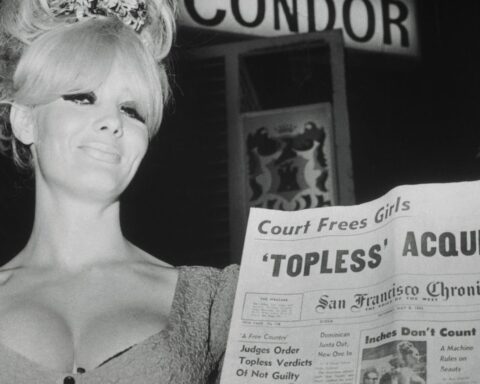Beyond the Visible: Hilma af Klint
(Germany/Sweden, 93 min.)
Dir. Halina Dyrschka
Do you long to roam the galleries of an art museum? It’s been a month since art lovers gazed at paintings outside their homes. Even without the constraints of physical distancing, however, one would barely have a chance to marvel at the work of Hilma af Klint. This late Swedish artist is a pioneer of abstract painting, but one hardly sees her recognized by the art establishment. Beyond the Visible: Hilma af Klint gives the mother of abstractionism her due while introducing a formidable talent. Her colourful work evokes a cross-section of Wassily Kandinsky and Maud Lewis. The colours, shapes, and beautiful dance of intellectualism and playfulness should immediately strike viewers. More than a mere art display, though, this documentary from director Halina Dyrschka paints a necessary portrait of the invisibility of women throughout art history.
Beyond the Visible uses af Klint’s story as a lens to interrogate the foundations of the art world. Multiple interviewees argue that the history of modern art needs to be written following the discovery of af Klint’s oeuvre. The interviewees offer a crash course in abstract art history that firmly places af Klint at its inception. They explain how virtually all histories of modern abstract art begin with Kandinsky, at least as the movement’s first major figure, but that af Klint’s re-discovery and re-appraisal 100 years after her first exhibitions implore reconsideration. (Her work predates Kandinsky by a few years.) The film fascinates as an excavation of lost history as well as a study of the values and biases that shape the artistic canon.
Dyrschka weaves af Klint’s rather eccentric biography within an analysis of the art establishment’s self-serving and wholly patriarchal standards. Beyond the Visible explains how Klint channelled her interests in math and geometry into art. The film notes how af Klint worked in relative obscurity at a time when women were generally allowed to dabble in art as a leisure pursuit until they were married off and expected to tidy homes and make babies. As montages unveil an extensive range of af Klimt’s work, the interviews explain how she made a living illustrating books and veterinary guides while painting a prolific portfolio that appeared in infrequent public exhibitions. However, the film finds a defiantly feminist tone in af Klint’s story. She is an appropriate force to shake up the art establishment.
In true documentary fashion, Beyond the Visible moulds af Klint into an enigmatic character. The interviewees explain how af Klint willed her collection to her nephew with the caveat that it could not be sold and had to remain out of the public eye for years. (The first posthumous exhibition came 42 years after her death.) Without the chance to snap up these rarities at auction and add them to their collections, the MoMAs of the art world denied her altogether. The film posits the correction of history as a mere inconvenience despite obvious evidence of merit. The significance and rarity of af Klint’s work cannot be denied, but the film questions experts who value art by the price it fetches. At once both priceless and worthless, as Klint’s archive lets one interrogate all aspects of the artistic canon.
Besides one-upping the mansplaining gatekeepers of the word, Dyrschka’s delivers an engaging master class of art theory and history. This refreshing seminar enlightens viewers while offering the chance to relish rare art. The talking heads, most of whom are women, unpack af Klimt’s gorgeous swathes of colours that distinguish her from the comparatively muted palettes of male artists.
Similarly, the interviewees fuse af Klint’s biography through interpretations of her art. Her eccentric background includes keen interest in mysticism and science alike. The doc observes elements of her work that visually interpret theories of relativity or doctrines of spiritual belief as a series of paintings. These spiritual images evoke shared traits among diverse religions, suggesting common links despite dissimilar viewpoints. Similarly, her work conjures worlds beyond the physical realm in these visualisations of science, faith, and mathematics. The experts argue that this interpretative quality to af Klint’s work distinguishes her as an innovator in abstractionism and an artist worthy of the esteem that male geniuses more easily enjoy.
Beyond the Visible: Hilma af Klint provides a unique opportunity to stroll the galleries as the artist gets her posthumous spotlight. The doc culminates with the relatively conventional art-show/backstage chronicle that many arts films provide while chronicling an exhibition. However, few films capture such a buzz of excitement. The 2013-2015 show exploded like a bomb on the art scene, and by the time one finishes the cinematic gallery tour complete with audio guide, one can easily see why—and why the participants in this documentary feel the history books need new editions.
Update: Beyond the Visible screens virtually at Hot Docs Ted Rogers Cinema beginning June 25.











